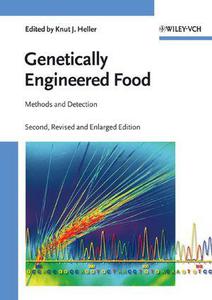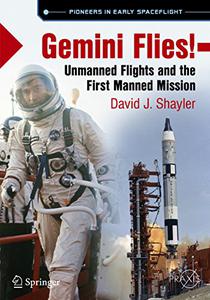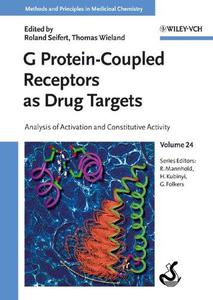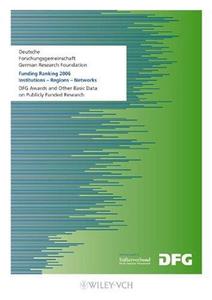
Sarah Ockwell-Smith, "Gentle Discipline: Using Emotional Connection-Not Punishment-to Raise Confident, Capable Kids"
English | 2017 | ISBN: 0143131893 | 272 pages | True EPUB | 0.42 MB
As seen in the New York Times - a practical guide that presents an alternative to shouting, shaming, and blaming-to give kids the skills they need to grow and thrive

Genetically Engineered Food: Methods and Detection By Knut J. Heller (ed.)
2006 | 311 Pages | ISBN: 3527313931 | PDF | 3 MB
Continuing the very successful first edition, this book reviews the most recent changes to the legal situation in Europe concerning genetically engineered food and labeling. Due to the extremely rapid developments in green biotechnology, all the chapters have been substantially revised and updated. Divided into three distinct parts, the text begins by covering applications and perspectives, including transgenic modification of production traits in farm animals, fermented food production and the production of food additives using filamentous fungi. The second section is devoted to legislation, while the final part examines methods of detection, such as DNA-based methods, and methods for detecting genetic engineering in composed and processed foods. From the reviews of the first edition: "This work promises to be a standard reference in the detection of genetically engineered food. I believe this work will find a valued place for any scientist, regulator or technical library that deals with biotechnology or detection of genetically engineered food organisms." James J. Heinis, Journal of Agricultural & Food InformationContent: Chapter 1 Transgenic Modification of Production Traits in Farm Animals (pages 1-26): Gottfried Brem and Mathias MullerChapter 2 Genetically Modified Plants (pages 27-63): Susanne Stirn and Horst LorzChapter 3 Fermentation of Food by Means of Genetically Modified Yeast and Filamentous Fungi (pages 64-94): Rena Leisegang, Elke Nevoigt, Anja Spielvogel, Georg Kristan, Anke Niederhaus and Ulf StahlChapter 4 Production of Food Additives Using Filamentous Fungi (pages 95-108): Carsten M. HjortChapter 5 Genetic Engineering of Bacteria Used in Food Fermentation (pages 109-132): Arnold GeisChapter 6 The Legal Situation for Genetically Engineered Food in Europe (pages 133-153): Rudolf Streinz and Jan KalbheimChapter 7 Detection of Genetic Modifications - Some Basic Considerations (pages 155-162): Knut J. HellerChapter 8 DNA?based Methods for Detection of Genetic Modifications (pages 163-185): Ralf EinspanierChapter 9 Genetic Engineering of Fish, and Methods of Detection (pages 186-200): Hartmut RehbeinChapter 10 Detection Methods for Genetically Modified Crops (pages 201-218): Rolf MeyerChapter 11 Methods for Detection of Genetically Modified Organisms in Composite and Processed Foods (pages 219-247): Karl?Heinz Engel, Francisco Moreano and Alexandra EhlertChapter 12 Mutations in Lactococcus lactis and their Detection (pages 248-268): Jan Kok and Bertus van den BurgChapter 13 Methods for Detection of Genetically Modified Microorganisms used in Food Fermentation Processes (pages 269-279): Walter P. Hammes, Christian Hertel and Torsten Bauer

General Knowledge Quiz Book: 450 multiple choice questions by Jim Hoff
English | 2022 | ISBN: N/A | ASIN: B0B59PSGCS | 127 pages | EPUB | 0.25 Mb
Perfect for a pub quiz or fun with family and friends. Suitable for all quizzing abilities, to be enjoyed with or without multiple choice. The general knowledge categories in this volume include:GeographySportHistoryFood and drinkMusicPoliticsCollective nounsScienceFilmArts and literatureCapital citiesPeopleArchitecture and designAnimals and natureTVTechnology and more

Mona Krook, "Gender Quotas and Women's Representation: New Directions in Research"
English | ISBN: 1138907421 | 2015 | 122 pages | EPUB | 1206 KB
Electoral gender quotas have emerged as one of the most critical political reforms of the last two decades, having now been introduced in more than 130 countries worldwide. The recent and global nature of these developments has sparked both scholarly and popular interest in the in which these quotas are designed, as well as their origins and effects.

David J. Shayler, "Gemini Flies!: Unmanned Flights and the First Manned Mission"
English | 2018 | ISBN: 3319681435 | ASIN: B07BQL3P9K | EPUB | pages: 360 | 6.0 mb
In May 1961, President John F. Kennedy committed the United States to landing a man on the moon before the end of the decade. With just a handful of years to pull it off, NASA authorized the Project Gemini space program, which gathered vital knowledge needed to achieve the nation's goal. This book introduces the crucial three-step test program employed by the Gemini system, covering:

Galatians Through the Centuries By John Riches(auth.)
2007 | 351 Pages | ISBN: 063123084X | PDF | 3 MB
This commentary on Paul's highly autobiographical letter to the Galations traces the history of the book's reception through the ages.Explores the influence and history of this important New Testament book Demonstrates the crucial role that Galatians has played in the development of very diverse forms of Christian spirituality Considers the influence of Galatians on a wide range of theological figures, including Chrysostom, Augustine, and LutherExamines the ways in which Galatians has influenced images of Paul, suggesting that it is the indeterminacy and complexity of his text that cause it to be interpreted in such widely differing ways Focuses on verses, themes or arguments that have been the subject of particularly influential readings Published in the innovative and stimulating Wiley-Blackwell Bible Commentaries reception history series, which focuses on the broad spectrum of interpretations rather than the traditional verse by verse analysis typically found in commentaries.Content: Chapter none Introduction (pages 1-65): Chapter none Galatians 1:1-9 (pages 66-82): Chapter none Galatians 1:10-24 (pages 83-95): Chapter none Galatians 2:1-10 (pages 96-104): Chapter none Galatians 2:11-21 (pages 105-143): Chapter none Galatians 3:1-14 (pages 144-187): Chapter none Galatians 3:15-29 (pages 188-213): Chapter none Galatians 4:1-20 (pages 214-226): Chapter none Galatians 4:21-31 (pages 227-244): Chapter none Galatians 5 (pages 245-283): Chapter none Galatians 6 (pages 284-301):

G Protein-Coupled Receptors as Drug Targets: Analysis of Activation and Constitutive Activity, Volume 24 By Raimund Mannhold, Hugo Kubinyi, Gerd Folkers(eds.)
2005 | 295 Pages | ISBN: 3527308199 | PDF | 3 MB
With its particular emphasis on the constitutive activity of G-protein-coupled receptors (GPCRs)s, this book comprehensively discusses an important biological process that has not yet been covered in such depth in any other existing books on GPCRs. The international team of highly distinguished authors addresses in detail current models and concepts, to introduce medicinal chemists, physiologists, pharmacologists, and medical researchers into the advances in the understanding of GPCR activation and constitutive activity. In addition, the book provides an overview on methods of investigating constitutive GPCR activity. The text is well illustrated by selected experimental data and schemes._The chaptes are all cross-referenced with each other and cover general mechnisms, methodological approaches and cover selected important GPCR sysstems, the consequences for drug action, including, side effects, and rational drug design for GPCR targets. A highly recommended reference for researchers in academia and industry. authors addresses in detail current models and concepts, so as to introduce pharmaceutical chemists, physiologists and medical researchers to the advances in the understanding of GPCR activation and constitutive activity, and provides an overview of the methods of investigating GPCR activity. The text is backed by abundant case studies and methodological advice for analyzing GPCRs, covering selected pharmacologically relevant GPCR systems, the consequences for drug action, including unwanted side effects, and rational drug design for GPCR targets. A highly practical reference for researchers in academia and industry.Content: Chapter 1 Historical Background and Introduction (pages 1-10): Richard A. Bond and Robert J. LefkowitzChapter 2 The Nature of Constitutive Activity and Inverse Agonism (pages 11-26): Terry KenakinChapter 3 Molecular Mechanisms of GPCR Activation (pages 27-42): Soren G. F. Rasmussen and Ulrik GetherChapter 4 Molecular and Cellular Determinants of GPCR Splice Variant Constitutive Activity (pages 43-54): Joel Bockaert, Sylvie Claeysen, Lara Joubert, Laurent Fagni and Aline DumuisChapter 5 Naturally Occurring Constitutively Active Receptors: Physiological and Pharmacological Implications (pages 55-61): Alan S. Kopin and Martin BeinbornChapter 6 The Impact of G Proteins on Constitutive GPCR Activity (pages 63-70): Graeme MilliganChapter 7 (Patho)physiological and Therapeutic Relevance of Constitutive Activity and Inverse Agonism at G Protein?Coupled Receptors (pages 71-80): Lutz HeinChapter 8 Methodological Approaches (pages 81-120): Prof. Thomas Wieland and Prof. Roland SeifertChapter 9 Constitutive Activity of ??Adrenoceptors: Analysis in Membrane Systems (pages 121-140): Prof. Roland SeifertChapter 10 Constitutive Activity of ??Adrenoceptors: Analysis by Physiological Methods (pages 141-157): Ursula Ravens, Clive J. Lewis and Sian E. HardingChapter 11 Constitutive Activity at the ?1?Adrenoceptors: Past and Future Implications (pages 159-176): Susanna Cotecchia, Francesca Fanelli, Alexander Scheer and Tommaso CostaChapter 12 Constitutive Activity of Muscarinic Acetylcholine Receptors: Implications for Receptor Activation and Physiological Relevance (pages 177-193): Ethan S. Burstein and Tracy A. SpaldingChapter 13 Constitutively Active Histamine Receptors (pages 195-222): Remko A. Bakker and Rob LeursChapter 14 Constitutively Active Serotonin Receptors (pages 223-241): Katharine Herrick?DavisChapter 15 Virally Encoded Constitutively Active Chemokine Receptors (pages 243-264): Barbara Moepps and Peter Gierschik

Future Crimes: Mysteries and Detection Through Time and Space by John Brunner
English | May 19, 2021 | ISBN: N/A | ASIN: B095HZVLPS | 286 pages | EPUB | 0.76 Mb
Telepaths, time machines and alien encounters collide with the crime and mystery genre in this new collection exploring the space where detective stories and science fiction meet.

Fusion Protein Technologies for Biopharmaceuticals: Applications and Challenges By
2013 | 612 Pages | ISBN: 0470646276 | PDF | 13 MB
Fusion proteins belong to the most lucrative biotech drugs?with Enbrel® being one of the best-selling biologics worldwide. Enbrel® represents a milestone of modern therapies just as Humulin®, the first therapeutic recombinant protein for human use, approved by the FDA in 1982 and Orthoclone® the first monoclonal antibody reaching the market in 1986. These first generation molecules were soon followed by a plethora of recombinant copies of natural human proteins, and in 1998, the first de novo designed fusion protein was launched. Fusion Protein Technologies for Biopharmaceuticals examines the state of the art in developing fusion proteins for biopharmaceuticals, shedding light on the immense potential inherent in fusion protein design and functionality. A wide pantheon of international scientists and researchers deliver a comprehensive and complete overview of therapeutic fusion proteins, combining the success stories of marketed drugs with the dynamic preclinical and clinical research into novel drugs designed for as yet unmet medical needs. The book covers the major types of fusion proteins?receptor-traps, immunotoxins, Fc-fusions and peptibodies?while also detailing the approaches for developing, delivering, and improving the stability of fusion proteins. The main body of the book contains three large sections that address issues key to this specialty: strategies for extending the plasma half life, the design of toxic proteins, and utilizing fusion proteins for ultra specific targeting. The book concludes with novel concepts in this field, including examples of highly relevant multifunctional antibodies. Detailing the innovative science, commercial realities, and brilliant potential of fusion protein therapeutics, Fusion Protein Technologies for Biopharmaceuticals is a must for pharmaceutical scientists, biochemists, medicinal chemists, molecular biologists, pharmacologists, and genetic engineers interested in determining the shape of innovation in the world of biopharmaceuticals. Content: Chapter 1 Fusion Proteins: Applications and Challenges (pages 1-24): Stefan R. SchmidtChapter 2 Analyzing and Forecasting the Fusion Protein Market and Pipeline (pages 25-37): Mark Belsey and Giles SomersChapter 3 Structural Aspects of Fusion Proteins Determining the Level of Commercial Success (pages 39-56): Giles SomersChapter 4 Fusion Protein Linkers: Effects on Production, Bioactivity, and Pharmacokinetics (pages 57-73): Xiaoying Chen, Jennica Zaro and Wei?Chiang ShenChapter 5 Immunogenicity of Therapeutic Fusion Proteins: Contributory Factors and Clinical Experience (pages 75-90): Vibha Jawa, Leslie Cousens and Anne S. De GrootChapter 6 Fusion Proteins for Half?Life Extension (pages 91-106): Stefan R. SchmidtChapter 7 Monomeric Fc?Fusion Proteins (pages 107-121): Baisong Mei, Susan C. Low, Snejana Krassova, Robert T. Peters, Glenn F. Pierce and Jennifer A. DumontChapter 8 Peptide?Fc Fusion Therapeutics: Applications and Challenges (pages 123-142): Chichi Huang and Ronald V. SwansonChapter 9 Receptor?Fc and Ligand Traps as High?Affinity Biological Blockers: Development and Clinical Applications (pages 143-162): Aris N. Economides and Neil StahlChapter 10 Recombinant Albumin Fusion Proteins (pages 163-178): Thomas Weimer, Hubert J. Metzner and Stefan SchulteChapter 11 Albumin?Binding Fusion Proteins in the Development of Novel Long?Acting Therapeutics (pages 179-190): Adam Walker, Grainne Dunlevy and Peter TopleyChapter 12 Transferrin Fusion Protein Therapies: Acetylcholine Receptor?Transferrin Fusion Protein as a Model (pages 191-199): Dennis Keefe, Michael Heartlein and Serene JosiahChapter 13 Half?Life Extension through O?Glycosylation (pages 201-209): Fuad FaresChapter 14 ELP?Fusion Technology for Biopharmaceuticals (pages 211-226): Doreen M. Floss, Udo Conrad, Stefan Rose?John and Jurgen SchellerChapter 15 Ligand?Receptor Fusion Dimers (pages 227-235): Sarbendra L. Pradhananga, Ian R. Wilkinson, Eric Ferrandis, Peter J. Artymiuk, Jon R. Sayers and Richard J. RossChapter 16 Development of Latent Cytokine Fusion Proteins (pages 237-252): Lisa Mullen, Gill Adams, Rewas Fatah, David Gould, Anne Rigby, Michelle Sclanders, Apostolos Koutsokeras, Gayatri Mittal, Sandrine Vessillier and Yuti ChernajovskyChapter 17 Fusion Proteins with Toxic Activity (pages 253-269): Stefan R. SchmidtChapter 18 Classic Immunotoxins with Plant or Microbial Toxins (pages 271-293): Jung Hee Woo and Arthur FrankelChapter 19 Targeted and Untargeted Fusion Proteins: Current Approaches to Cancer Immunotherapy (pages 295-314): Leslie A. Khawli, Peisheng Hu and Alan L. EpsteinChapter 20 Development of Experimental Targeted Toxin Therapies for Malignant Glioma (pages 315-328): Nikolai G. Rainov and Volkmar HeideckeChapter 21 Immunokinases (pages 329-336): Stefan Barth, Stefan Gattenlohner and Mehmet Kemal TurChapter 22 ImmunoRNase Fusions (pages 337-353): Wojciech ArdeltChapter 23 Antibody?Directed Enzyme Prodrug Therapy (ADEPT) (pages 355-363): Surinder K. SharmaChapter 24 Tumor?Targeted Superantigens (pages 365-381): Gunnar Hedlund, Goran Forsberg, Thore Nederman, Anette Sundstedt, Leif Dahlberg, Mikael Tiensuu and Mats NilssonChapter 25 Fusion Proteins with a Targeting Function (pages 383-395): Stefan R. SchmidtChapter 26 Cell?Penetrating Peptide Fusion Proteins (pages 397-411): Andres Munoz?Alarcon, Henrik Helmfors, Kristin Karlsson and Ulo LangelChapter 27 Cell?Specific Targeting of Fusion Proteins through Heparin Binding (pages 413-427): Jiajing Wang, Zhenzhong Ma and Jeffrey A. LoebChapter 28 Bone?Targeted Alkaline Phosphatase (pages 429-439): Jose Luis MillanChapter 29 Targeting Interferon?? to the Liver: Apolipoprotein A?I as a Scaffold for Protein Delivery (pages 441-452): Jessica Fioravanti, Jesus Prieto and Pedro BerraondoChapter 30 Signal Converter Proteins (pages 453-473): Mark L. TykocinskiChapter 31 Soluble T?Cell Antigen Receptors (pages 475-493): Peter R. RhodeChapter 32 High?Affinity Monoclonal T?Cell Receptor (mTCR) Fusions (pages 495-505): Nikolai M. Lissin, Namir J. Hassan and Bent K. JakobsenChapter 33 Amediplase (pages 507-518): Stefano Evangelista and Stefano ManziniChapter 34 Breaking New Therapeutic Grounds: Fusion Proteins of Darpins and Other Nonantibody Binding Proteins (pages 519-527): Hans Kaspar BinzChapter 35 Resurgence of Bispecific Antibodies (pages 529-543): Patrick A. Baeuerle and Tobias RaumChapter 36 Novel Applications of Bispecific DART® Proteins (pages 545-555): Syd Johnson, Bhaswati Barat, Hua W. Li, Ralph F. Alderson, Paul A. Moore and Ezio BonviniChapter 37 Strand Exchange Engineered Domain (Seed): A Novel Platform Designed to Generate Mono and Multispecific Protein Therapeutics (pages 557-569): Alec W. Gross, Jessica P. Dawson, Marco Muda, Christie Kelton, Sean D. McKenna and Bjorn HockChapter 38 CovX?Bodies (pages 571-582): Abhijit Bhat, Olivier Laurent and Rodney LappeChapter 39 Modular Antibody Engineering: Antigen Binding Immunoglobulin Fc CH3 Domains as Building Blocks for Bispecific Antibodies (mAb2) (pages 583-589): Maximilian Woisetschlager, Florian Ruker, Geert C. Mudde, Gordana Wozniak?Knopp, Anton Bauer and Gottfried Himmler

Funding Ranking 2006: Institutions - Regions - Networks, DFG Approvals and Other Basic Data on Publicly Funded Research By
2007 | 179 Pages | ISBN: 3527320423 | PDF | 6 MB
Following on from previous publications in 1997, 2000 and 2003, the Deutsche Forschungsgemeinschaft (German Research Foundation) presents its fourth "Funding Ranking", an overview of the distribution of awards to universities and non-university research institutions in Germany. The scope of the report has increased considerably compared to previous editions. Alongside the report's central indicator - DFG awards per individual research institution - the document also covers a wide range of additional indicators regarding publicly financed research in one of the world's leading industrial countries. For the first time, the report also includes information on R&D funding for selected federal programmes, for thematic priorities within the European Union's Sixth Framework Programme, and for collaborative industrial research funded by the German Federation of Industrial Cooperative Research Associations "Otto von Guericke". The third party funding indicators, which each depict individual aspects of publicly financed research, represent in total approximately 80 percent of all public third party funding for university research. Content: Chapter 1 Introduction (pages 10-12): Chapter 2 Funding?Based Research Indicators - Basis and Background (pages 13-42): Chapter 3 Research Profiles of Higher Education Institutions and Regions (pages 43-62): Chapter 4 Indicator Comparison at the Level of Research and Funding Area (pages 63-113): Chapter 5 Overview (pages 114-132): Chapter 6 Bibliography and Information Sources (pages 133-134): Chapter 7 Appendix (pages 135-182):


